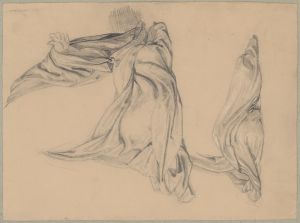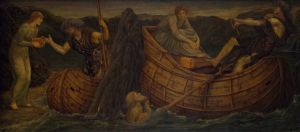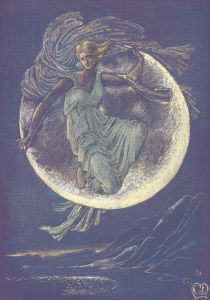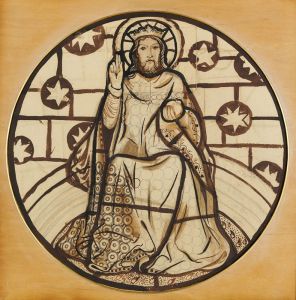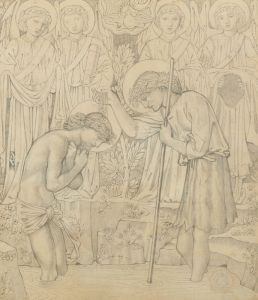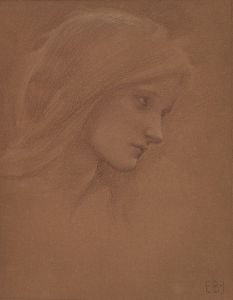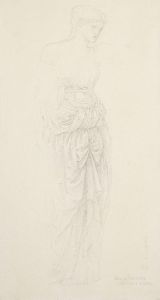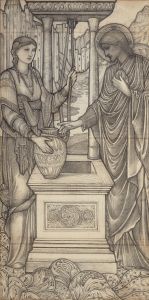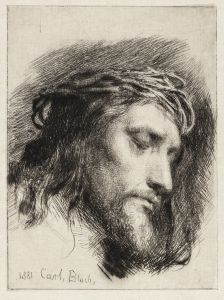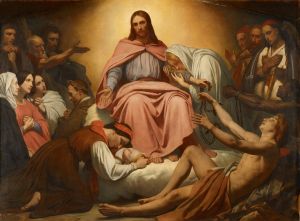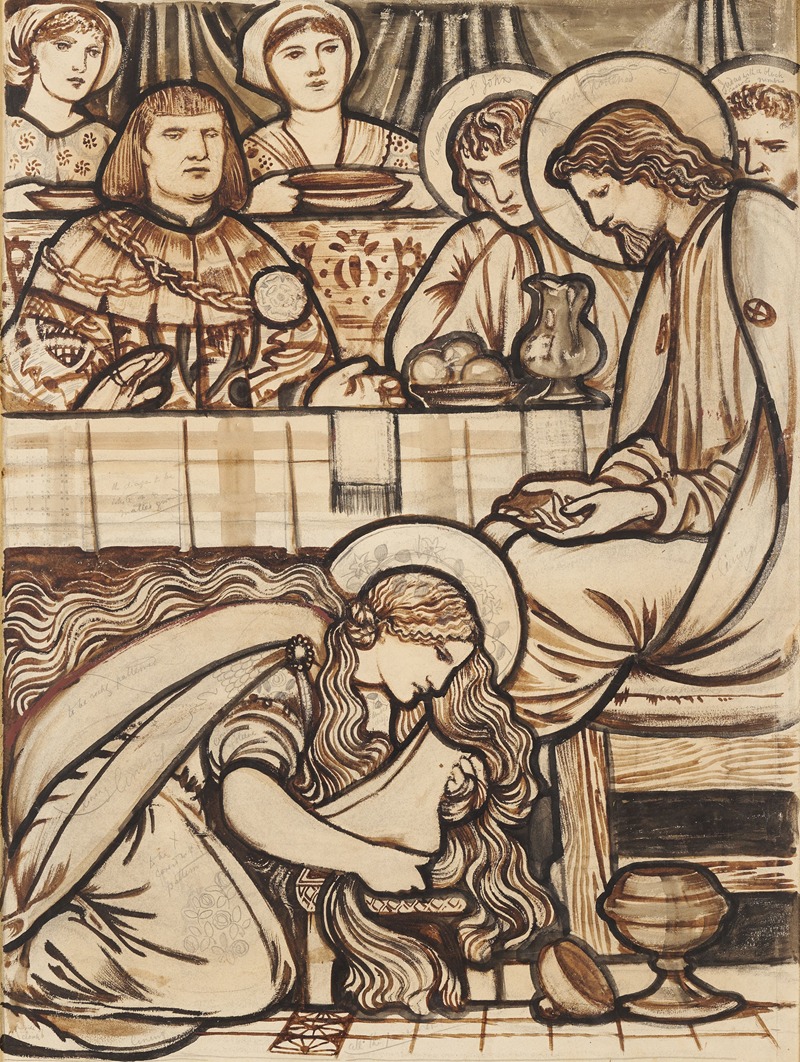
The Magdalen anointing Christ’s Feet
A hand-painted replica of Sir Edward Coley Burne-Jones’s masterpiece The Magdalen anointing Christ’s Feet, meticulously crafted by professional artists to capture the true essence of the original. Each piece is created with museum-quality canvas and rare mineral pigments, carefully painted by experienced artists with delicate brushstrokes and rich, layered colors to perfectly recreate the texture of the original artwork. Unlike machine-printed reproductions, this hand-painted version brings the painting to life, infused with the artist’s emotions and skill in every stroke. Whether for personal collection or home decoration, it instantly elevates the artistic atmosphere of any space.
"The Magdalen anointing Christ’s Feet" is a painting by Sir Edward Coley Burne-Jones, a prominent British artist associated with the Pre-Raphaelite Brotherhood and the later Aesthetic movement. Burne-Jones, born in 1833 and passing in 1898, was known for his romantic and often medieval-inspired works, which frequently depicted scenes from mythology, literature, and religious narratives.
This particular painting illustrates a biblical scene involving Mary Magdalene, a significant figure in Christian tradition, known for her close association with Jesus Christ. The scene depicted is derived from the New Testament, where Mary Magdalene anoints the feet of Christ with precious ointment and wipes them with her hair. This act is often interpreted as one of devotion and repentance, symbolizing humility and love.
Burne-Jones's interpretation of this scene is characterized by his distinctive style, which often includes elongated figures, intricate details, and a dreamlike quality. His works are noted for their use of rich colors and a sense of otherworldly beauty, which is likely present in this painting as well. The composition would typically focus on the emotional interaction between the figures, capturing the reverence and solemnity of the moment.
The Pre-Raphaelite movement, with which Burne-Jones was closely associated, sought to return to the detail, intense colors, and complex compositions of Quattrocento Italian art. This movement was a reaction against the academic art standards of the time, which the Pre-Raphaelites felt were overly mechanistic and lacking in genuine emotion. Burne-Jones, although not an original member of the Brotherhood, became one of its most influential figures, extending its ideals into the broader Aesthetic movement.
Burne-Jones's work often reflects a deep interest in medieval themes and a fascination with the spiritual and the mystical. His paintings frequently explore themes of love, redemption, and the divine, often through the lens of mythological or religious narratives. "The Magdalen anointing Christ’s Feet" fits within this thematic framework, offering a visual meditation on themes of forgiveness and devotion.
The painting would have been created during a period when Burne-Jones was highly active and influential in the art world, contributing to the broader cultural movement of the Aestheticism, which emphasized art for art's sake and the pursuit of beauty as a fundamental purpose of art. His works were celebrated for their beauty and emotional depth, and he was a key figure in the revival of interest in medieval and Renaissance art forms.
While specific details about the provenance or current location of "The Magdalen anointing Christ’s Feet" are not readily available, Burne-Jones's works are held in numerous public and private collections worldwide. His legacy continues to be appreciated for its contribution to the development of modern art and its enduring appeal to audiences seeking beauty and emotional resonance in art.






